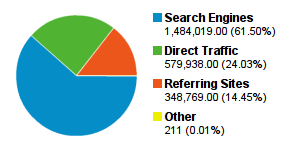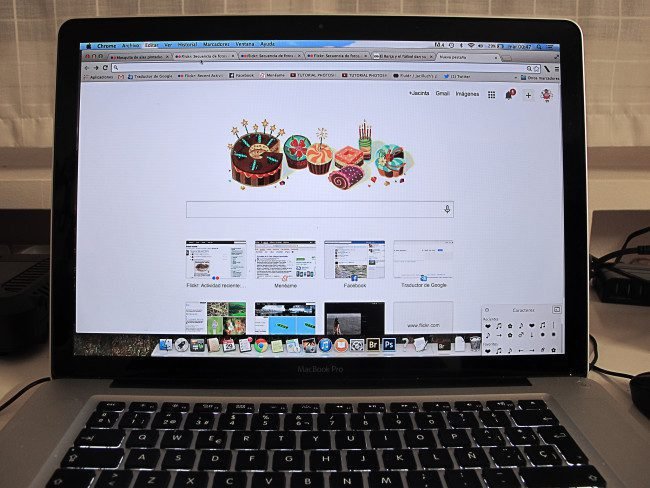As a store owner, you’re likely focused — and rightfully so — on growing. Growing your product selections, growing your audience, growing your staff… you name it, you’re working on it. But have you given any thought to growing your traffic?
In our previous post on gaining more traffic, we explained exactly how more traffic to your online store can lead to more revenue. Today, we’re going to explain exactly how you can go about scaling your traffic from the early stage to a growth period, and why you should avoid taking a one-size-fits-all approach to growth. (Hint: it’s got a lot to do with your customers.)
Let’s take a look at how you can find the most suitable ways to boost your site traffic, starting with a quick recap of why this should be on your radar in the first place.
Scaling your traffic will help you make more sales
Store owners don’t often have a lot of spare time. So you might be asking “why should I focus on scaling my traffic when there’s so many other things I could be doing?”
As you already know, more visitors to your store will ultimately lead to more sales. This is what makes the process of scaling your website traffic so beneficial: it can result in dramatic increases to your revenue, all without requiring any other changes to your store.

A 5% conversion rate may only mean 5 sales from 100 visitors a day, but that’s 10 sales if you can double your traffic to 200 visitors. And as we’ll show you in this post, doubling your traffic — especially at the early stages — isn’t all that difficult, nor is it expensive or time-consuming.
This isn’t to say that applying multiple marketing methods at once, or simply adding more products or updating your store, won’t result in more sales. They probably will. However, if you only have a little time to spare, growing your traffic with one or two highly targeted methods will get you the most results with the least amount of effort.
Let’s take a look at how you should approach the process of scaling your traffic, starting with how to identify the methods that are most suitable.
Consider your audience, products, and resources first
Before you begin looking for ways to increase your traffic, consider this: every store is different, and what works well for some may not work at all for others.
For each method you investigate, you should consider whether or not it’s the right fit for the audience you’re targeting, the products you’re selling, and the resources you have available. This will help you save money and time, in the long run. It will also ensure that you’re only doing what has a high chance of succeeding, not simply throwing things at the wall to see what sticks.
For example, pretend you have an online store selling bathroom hardware, and you’ve heard that social media is a great way to grow your traffic. But how often do your target customers chat on Twitter about needing to buy a new toilet? Are photos of bathtubs and surrounds “Pinterest-friendly”? Do you have someone working for you that has time to write posts for Facebook or take photos for Instagram?
As you might have already guessed, social media might not be the best approach to gaining more clicks to our theoretical store. However, plenty of customers go to Google to research new bathroom hardware. So finding a way to appear in customer searches — perhaps through content marketing, or a little search engine optimization — would be the easiest way to get more traffic.
That leads us to our first tip: follow the path of least resistance.
The path of least resistance: expand on your best source of traffic
If you have Google Analytics set up for your store, or access to a similar source of data, take a peek at your traffic sources. (In GA, click Acquisition, then Overview to get started.) Do most of your visitors currently come from a Google search? Or are they mostly referrals from other websites?

Now look at the individual conversion rates for these traffic sources. How often do those who come to your site from a search make a purchase compared to those who arrive through other methods? If you already send emails or are active on social media, are your conversion rates higher or lower?
Your aim here should be to identify one source of traffic that is both reliable and highly-converting. This may not be your highest source of traffic, or have the highest conversion rate, but it should have high marks for both. This is your path of least resistance — that is, a traffic source that is already performing well for you and will undoubtedly benefit from additional attention.
Once you identify this source, brainstorm some ways to grow it. Here are a few ideas:
- To grow organic traffic, focus on targeting additional keywords and optimizing your site for better search performance.
- To grow referrals, look for opportunities to receive coverage from trusted sources. Contact blogs or news websites. If you’re well-established and have the time, you can also look into guest posting or link building.
- If email marketing is your best source, look into ways to convert more of your visitors into subscribers, like extra forms or content that requires an email to be viewed.
- If you’re already using paid search, consider increasing your budget on your best keywords, or adding a few new ones where appropriate.
You already know this channel works, so investing a little more time or money into it will help you find out just how far it can go.
Once you’ve tackled the path of least resistance, you can move on to new sources… but carefully.
Identify low-effort, high-opportunity traffic sources
As mentioned, store owners — especially those just starting out on their own — don’t often have a lot of free time. Running a business takes hard work, and there’s often no one around to do it but you.
As important as growing your website traffic is, it’s not something you should be spending hours of your day working on. Instead, the next step in this process is to find relevant opportunities that require minimal direction or interference. This may seem like an impossibility, but trust us — they’re out there.
One fantastic example of this is Facebook remarketing, which we recently introduced in another post. Is your target audience using Facebook? Do you have a few dollars to spare on advertising? If you can say “yes” to both of these questions, you can set up ads designed to target only those who have visited your site once before. These repeat visitors tend to have a higher conversion rate, and once the ads are running you don’t even have to touch them if you don’t want to.
Search engine optimization, or SEO, is another example. If you’ve done zero optimization to your site thus far, you can read our guide to practical SEO for eCommerce and implement one or two long-term changes, like optimizing your page load times or adding a few keywords. Then simply sit back and wait.

Again, the key is to find opportunities that not only match your products and target audience (as discussed earlier), but also those that won’t eat up hours of your time. Here are a few:
- Social media ads, including Facebook remarketing
- Optimizing your site for search
- Automated emails or drip campaigns
- Evergreen content, meaning blog posts or guides that are likely to rank well and be relevant long-term or year-round
- Pay-per-click (PPC) advertising, which we’ll discuss in a little more detail below
Find where your audience goes to talk about you
You’ve followed the path of least resistance and found passive opportunities for growth. Now it’s time to seek out your audience.
Your target customers go somewhere to talk about your products or brand — it’s up to you to find out where that is. Doing so will potentially open up an opportunity for you to participate in these conversations and direct more traffic to your store.
Twitter is one location where you can typically find these conversations happening. Just perform a search for your brand name, products, or even some keywords from your industry and see what comes up. Do you see any opportunities to answer questions or help customers find solutions to their problems?
Of course, you can also look for online forums, other social media channels like Facebook and Pinterest, or blogs for these conversations. Once you identify the location where these conversations are happening most often, consider doing the following:
- Create an account. This will ensure others that you’re the real deal.
- Monitor for brand, product, or topic mentions. On Twitter, this is as easy as looking for @mentions; with blogs, you might want to set up a free Google Alert so you receive emails when your name comes up.
- Jump in… if you need to. Plan to engage when you’re notified or it’s appropriate. This might mean answering questions, thanking bloggers for positive feedback, or simply reading critique of your products. It’s not always necessary to chime in, so don’t feel as if every mention of your industry requires your input — you should only aim to contribute if you have something meaningful to say, or you’ve been addressed directly.
With periodic engagement like this, you’ll have the opportunity to help, contribute, or simply listen to feedback. All of these are things that can lead to the impression of your company as one that cares about its customers, and this — combined with your presence — can move even more visitors to your store.
For more advanced growth: consider pay-per-click advertising
If you’ve already tackled the strategies in this post, or are looking for suggestions on growing your traffic beyond the early stages, consider trying pay-per-click ads for your store.

PPC ads are typically cost-effective, only requiring small payments in exchange for clicks (not views), and can be made to appear for multiple keywords or phrases your target customers are already searching for. You can also run multiple ads at the same time, which allows you to experiment and try different approaches to see which keywords lead to the most revenue.
Although you do have to pay for PPC ads, they can provide an enormous source of traffic and revenue for growing stores. As you grow and find more room in your budget for marketing, PPC can give you a fantastic way to boost your traffic quickly, and without doing much work: you can “set and forget” your ads, and simply view a report each month to see what’s working and what’s not.
Just be careful not to target keywords that are too broad — for example, “games” instead of “board games” or perhaps “buy board games online.” Broader keywords may promise high views and clicks, but the intent of someone searching for “games” is unclear… leading to money wasted on clicks that won’t convert. If you sell board games, you’re much more likely to get a sale out of those latter two keywords, even if the promised traffic is reduced.
Scaling your traffic pays off
There you have it — we’ve just shown you how to find the best ways to scale your eCommerce website’s traffic and grow your sales even further. With just a bit of research and time, it’s possible to find plenty of methods to bring in new traffic that are suitable not only to your store and products, but also to your target audience.
We hope these tips and ideas have given you something to think about as you work to grow your store. Don’t hesitate to let us know if you have any questions — we’re always keen to make things clearer for you, so comment away!

